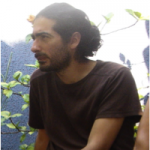Link to Pubmed [PMID] – 33359344
Link to DOI – 10.1016/j.neuroimage.2020.117685S1053-8119(20)31170-8
Neuroimage 2021 Mar; 228(): 117685
Evolution, as we currently understand it, strikes a delicate balance between animals’ ancestral history and adaptations to their current niche. Similarities between species are generally considered inherited from a common ancestor whereas observed differences are considered as more recent evolution. Hence comparing species can provide insights into the evolutionary history. Comparative neuroimaging has recently emerged as a novel subdiscipline, which uses magnetic resonance imaging (MRI) to identify similarities and differences in brain structure and function across species. Whereas invasive histological and molecular techniques are superior in spatial resolution, they are laborious, post-mortem, and oftentimes limited to specific species. Neuroimaging, by comparison, has the advantages of being applicable across species and allows for fast, whole-brain, repeatable, and multi-modal measurements of the structure and function in living brains and post-mortem tissue. In this review, we summarise the current state of the art in comparative anatomy and function of the brain and gather together the main scientific questions to be explored in the future of the fascinating new field of brain evolution derived from comparative neuroimaging.


